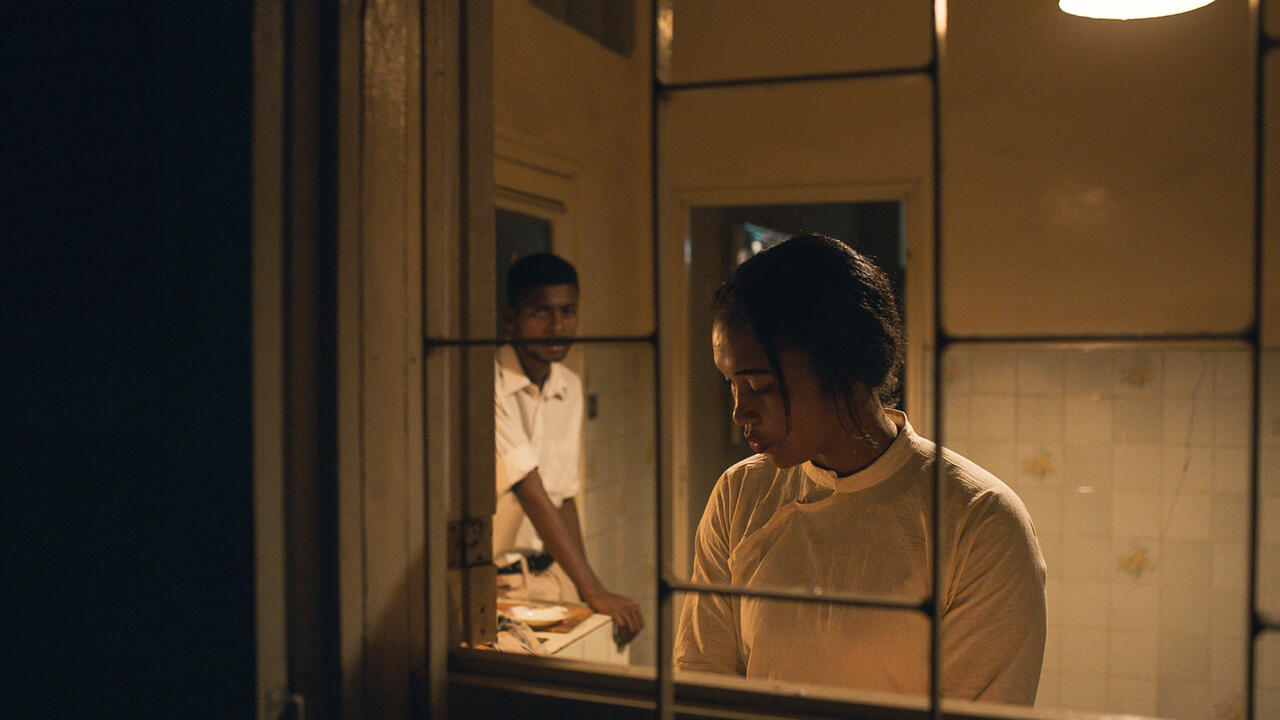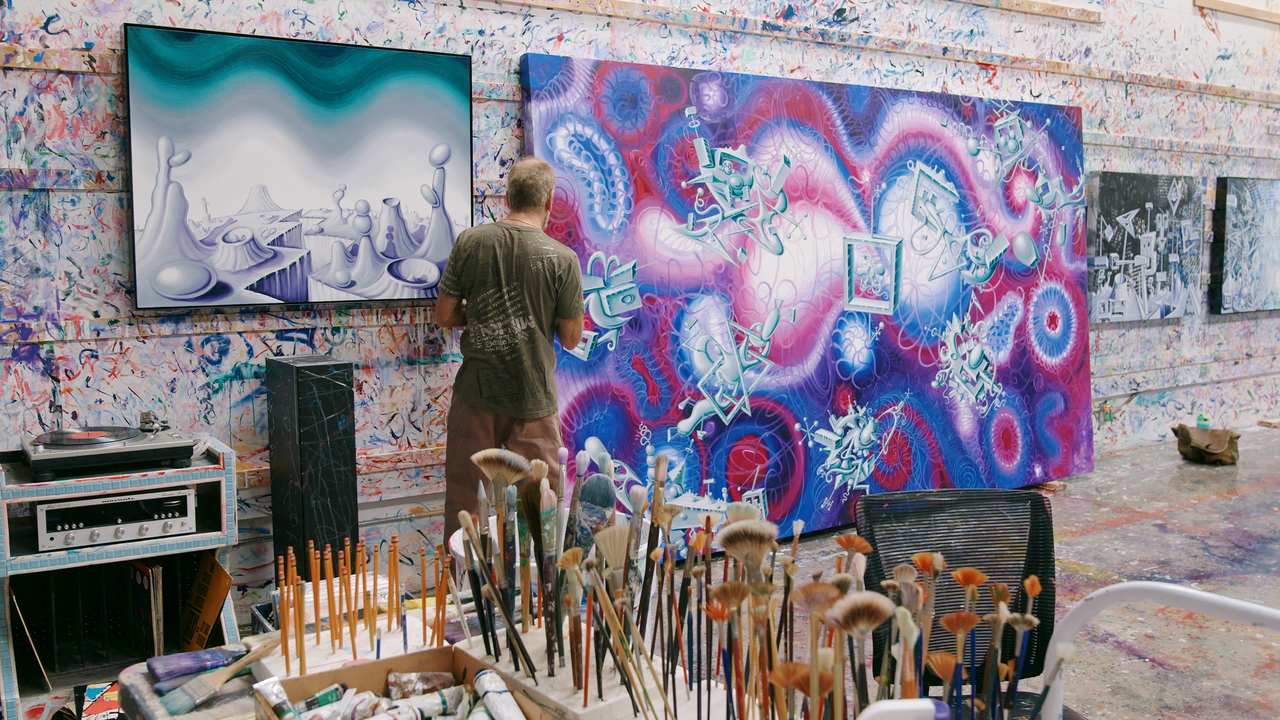Glasgow According to: Jamie Kenyon of 47 Canal
As Glasgow International 2024 launches, the gallerist discusses his personal history with the city and its bright future of experimental spaces and artist projects
As Glasgow International 2024 launches, the gallerist discusses his personal history with the city and its bright future of experimental spaces and artist projects

For Glasgow International’s programme, SWG3 presents Martin Beck’s 13-hour video work Last Night (2016) in collaboration with New York gallery 47 Canal. Jamie Kenyon, partner at 47 Canal, talks about his personal and deep-rooted connection to Glasgow and the city’s rising generation of innovative, adventurous and resilient galleries and artists.
What’s your personal connection to Glasgow?
I moved to Glasgow from Manchester to go to art school in 2003 and it became my home. I lived and worked there until 2012, when I moved to New York. In some ways, I never left. My family and friends are there, and my partner is Glaswegian, so the city is a constant presence in my life.

What’s special about the city’s art scene?
It’s a back door to the art world, in a good way. It’s a scene that, for better or worse, has thrived outside the pressure and strictures of art-market forces and finds its own way of doing things.
What impact does the Glasgow International have on the city?
Glasgow is one of those places that people from around the world always say, ‘Oh, I really want to go there, I’ve never been.’ Glasgow International has given those people a great reason to visit, to find an entrance. It’s also a moment for artists and the city to show itself to itself, in ways that can be celebrated.
In recent years, perhaps, there wasn’t the same community and connectivity between the biennial and the art scene but it feels like that’s returning this year. There’s a renewal happening. The best example of this is the approach of programming this year by Richard Birkett [Director of Glasgow International]: it looks more thorough, sensitive and radical than what many major museums elsewhere – anywhere – are currently doing.

Can you say a bit more about the Martin Beck work that you are bringing to the biennial and its significance for you and for the city?
As much as it’s a city known for its art scene, Glasgow’s also famous for its music scene. There’s a powerful underground current between New York and Glasgow’s music histories, especially with dance music. I’ve always been interested in these subcultural and experimental spaces, which are now both disappearing in similar ways.
The venue for Martin’s show at Glasgow International is a personal one for me. It’s showing in an arts organization where I started a project space in 2007. Martin’s work, Last Night (2016), is a 13-hour video work based on the records played by David Mancuso on 2 June 1984 at his loft party in New York. It also just showed at MoMA on the 40th anniversary of the original party. Mancuso’s parties were a place for community and anti-commercialism and bringing people together in free and connecting ways. Disco was an anti-establishment movement. Putting Martin’s work in this context gives people who might be hesitant to go into an art gallery or a museum a way to experience art as it slips past the boundaries of music or art, popular or esoteric.

47 Canal artists are also showing at the Gallery of Modern Art. How does the show – Enzo Camacho & Ami Lien: ‘Offerings for Escalante’ – relate to Glasgow’s history?
Enzo and Ami’s exhibition at GoMA scratches deeply at Glasgow’s history as the ‘Second City of the British Empire’. The museum building was previously a commodities exchange and a tobacco merchant’s home, now repurposed for civic use. For the last several years, Enzo and Ami have been doing work on a sugarcane plantation island in the Philippines called Negros, where the people are facing increasing pressures on the lands that are their home, but that they largely do not own. Their recent engagements there have focused on the communities’ resistances to the overbearing and violent state government. ‘Offerings for Escalante’ documents an oral history of a massacre that took place on the island in the 1980s during the Marcos regime. Violence against these farm workers and organizers is still continuing today, not just in the Philippines.
Glasgow has a complex relationship with these histories. The city has greatly benefitted from British colonialism in far-off lands and has also been a place of political resistance against similar oppressions forced upon Scotland. For me, the show at GoMA draws clear connections between The clearances of the Scottish Highlands in the 1700s and communist revolts of early 20th century, and a solidarity with global struggles that the city and its people has continued to this today.

Another timely Glasgow International show at a number of libraries across the city, organized by Joey Simons, constellates the historical workers’ struggles in Glasgow with today’s prison, land, immigrant and housing activism. As imperial powers continue to cause death, destruction and disaster, Enzo and Ami’s work shows the human connections we can build as resistance.

Which emerging artists excite you at the moment?
Practice takes varying forms. Small galleries and spaces are just as much artistic projects in Glasgow, often run by artists and curators that blur the lines between where being an artist starts and ends. From a view outside the city, the last ten years have been a difficult but exciting. A new generation of galleries and artists are finding ways to do world-class projects with increasingly dwindling resources and against a background of over-professionalization and demands on creative practices from funding bodies and a lack of real support for experimentation or sustainability.
The people resisting this institutional capture are, in my view, doing some of the most exciting things in the UK just now. Galleries like Céline, Ivory Tars & Cento and Listen Gallery are beginning to find a different model of how to be a ‘commercial gallery’ that was not perhaps possible a few years ago. Alongside this, there’s a vibrant community of artists working in moving image who are sharing resources, producers, curators and ideas to build something very special.

Favourite museum, gallery or cultural space in Glasgow?
Mackintosh House at the Hunterian Art Gallery for a demonstration of living in a creative city. The museum bathrooms in the basement are a subtle artwork in themselves.

Favourite place to eat in the city?
For breakfast, Café Fame on Hope Street. The walls are covered with portraits of famous people from the city, along with photos of Florence, the owner’s hometown. Maybe Glasgow is the Florence of the North! And for lunch or dinner, Cafe Gandolfi. It’s a canteen for the people of Glasgow.
And favourite bar or pub?
The Belle on Great Western Road. Too many special memories to pick another.

Best thing about Glasgow?
No matter where you’re from, you’ll find a home here.
Worst thing about Glasgow?
People not from Glasgow making assumptions about the people of Glasgow.
Read our critic’s guide to the festival.
Further Information
For all the latest news from Frieze, sign up to the newsletter at frieze.com, and follow @friezeofficial on Instagram, Twitter and Frieze Official on Facebook.
Main Image: Enzo Camacho and Ami Lien, Social Volcano (lava moon), 2023. Courtesy: the artists. Photo: Wong Pak Hang, Studio Lights On






















